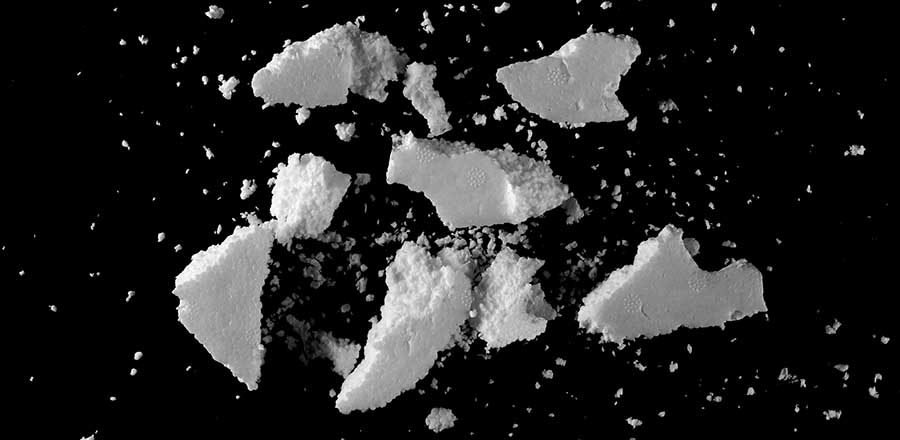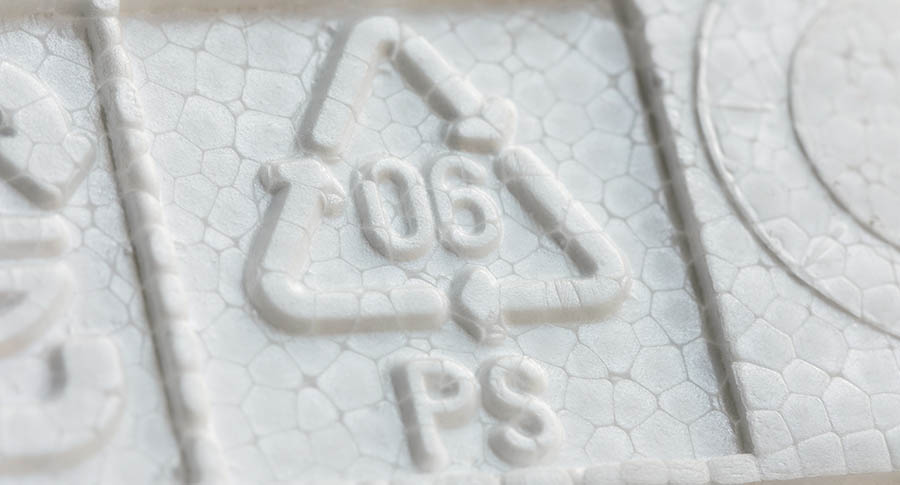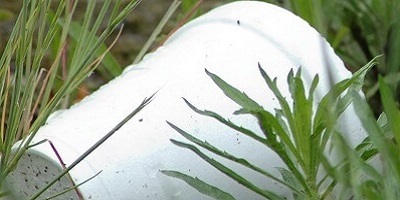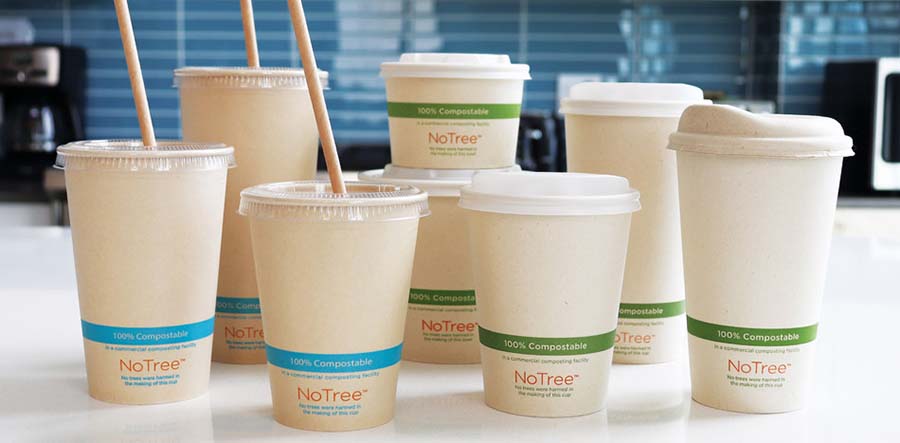In this article, we will explore:
- How are foam cups made?
- How many foam cups are produced every year?
- Are foam cups recyclable?
- Are foam cups bad for your health?
- Is Polystyrene foam the same as Styrofoam?
- What are some sustainable alternatives to Polystyrene foam?
How Are Foam Cups Made?
Like other plastics, polystyrene is a polymer; a long repeating chain of monomers (small molecules). It is made from hydrocarbons like benzene and ethylene, which require raw materials like natural gas and petroleum.
At the beginning of the manufacturing process, polystyrene starts as small, dense, hard beads. Using heat and steam, these beads are softened and expanded, eventually growing larger and, as a result, less dense. In fact, if you look at a piece of polystyrene foam, you may actually be able to see these beads.

Like other plastics, polystyrene can be heated and molded, shaped, or extruded into a variety of different shapes and sizes. Once cooled, polystyrene has several light, expanded cells, and serves as an excellent insulator and shock absorber. This is a reason why it’s commonly used in disposable food and beverage packaging like coffee cups, as well as coolers, bicycle helmets, car seats, protective packaging and more.
How Many Foam Coffee Cups are Produced Every Year?
Polystyrene has been around since the 1930s and first made its way into coffee cups around the 1960s, quickly soaring in popularity and usage.
As of 2018, it was estimate that in the United States, more than three million tons of polystyrene were produced every year. This translated to 25 billion polystyrene cups being thrown away annually.
When compared to other waste products, polystyrene takes first place for being associated with most litter. In fact, the material accounts for 30% of landfill mass globally. In the U.S. alone, roughly 1,369 tons of polystyrene ends up in landfills every single day.
Fortunately, this is changing as some of the largest, most well-known QSRs have begun to phase the material out. In 2018, McDonald's started to ditch polystyrene foam after agreeing to phase it out of sandwich packaging decades earlier in 1990. By 2020, Dunkin Donuts was also free from polystyrene, using paper cups instead.
Numerous cities and states have also put bans in place on single-use foam products including San Francisco, California, Los Angeles, California, New York City, and more. Maryland became the first U.S. state to enact a statewide ban on polystyrene foam food service products, including cups, effective July 2020. Countries including the Philippines, India, China, Canada, France, and Taiwan have also banned foam.

Are Foam Cups Recyclable?
Polystyrene is a type of plastic, so are foam coffee cups recyclable?
In theory, they most certainly can be recycled. However, the cases in which this actually happens are extremely rare. In fact, we'd be hard-pressed to find a municipal polystyrene recycling center as the recycling process for foam is difficult, inconvenient, and expensive. It's estimated a recycling program could spend about $1,000 to recycle foam and end up with only $200 of materials. Even then, recycled foam can rarely be transformed into something useful though it can be used as a construction material.
It's estimated a recycling program could spend about $1,000 to recycle foam and end up with only $200 of materials.
The reason polystyrene foam is so difficult to recycle is also partly why it can’t be composted, either. When compared with other plastics, polystyrene is more resistant to photolysis or decomposition as a result of the action of light. A foam coffee cup can take up to 500 years to decompose, leaching harmful chemicals as it does.
Like all plastics, including oxo-degradable plastic, the biggest concern with foam is that it persists in our environment for a very long time. Worse, the composition of foam breaks down into tiny little beads. These individual tiny beads can be mistaken as food and consumed by marine and aquatic species.

Are Foam Cups Bad For Your Health?
When it comes to the debate over foam cups versus paper cups, health is another crucial factor to consider.
More than 50 chemical byproducts are released when producing foam products. These include styrene, which is considered to be a possible human carcinogen according to the International Agency for Research on Cancer (IARC), and benzene which is a known human carcinogen. While the levels of benzene in foam cups are generally low, prolonged exposure or ingestion can pose health risks.
The risks to human health aren't limited to manufacturing either. Styrene can leach out of foam food and drink containers, especially when exposed to hot liquids, acidic foods, or alcohol. Styrene has been linked to nervous system effects, such as headaches, fatigue, and dizziness. Some studies also suggest that chemicals in polystyrene, like styrene, can act as endocrine disruptors, interfering with hormonal functions and potentially leading to reproductive and developmental issues.
Is Polystyrene Foam the Same as Styrofoam?
Polystyrene foam cups are often referred to as Styrofoam™ similar to how facial tissues have become synonymous with Kleenex. Styrofoam™ is the registered trademarked name for a Dow Chemical Company building material product. However, it’s often used when talking about anything made with expanded polystyrene (EPS). This includes items like packing peanuts, egg cartons, foam packaging, building insulation, and disposable coffee cups.
Alternatives to Foam Cups
It's unlikely we'll be able to completely abandon disposable coffee cups. Fortunately, there are eco-friendly biodegradable alternatives.
A latte can still be steamy, thanks to insulated hot cups that are certified compostable and use air pockets. Kraft hot cups are made from 100% rapidly renewable sugarcane fiber instead of fossil fuels. This makes them capable of containing liquids up to 220℉ but doesn't require 500+ years for the cup to decompose.
Conclusion
Undoubtedly, foam has served several purposes affordably but at a huge cost to the environment.
Fortunately, we now live in an era where keeping coffee hot and our planet healthy is far easier. We can all do our part by switching to alternatives to foam coffee cups.




